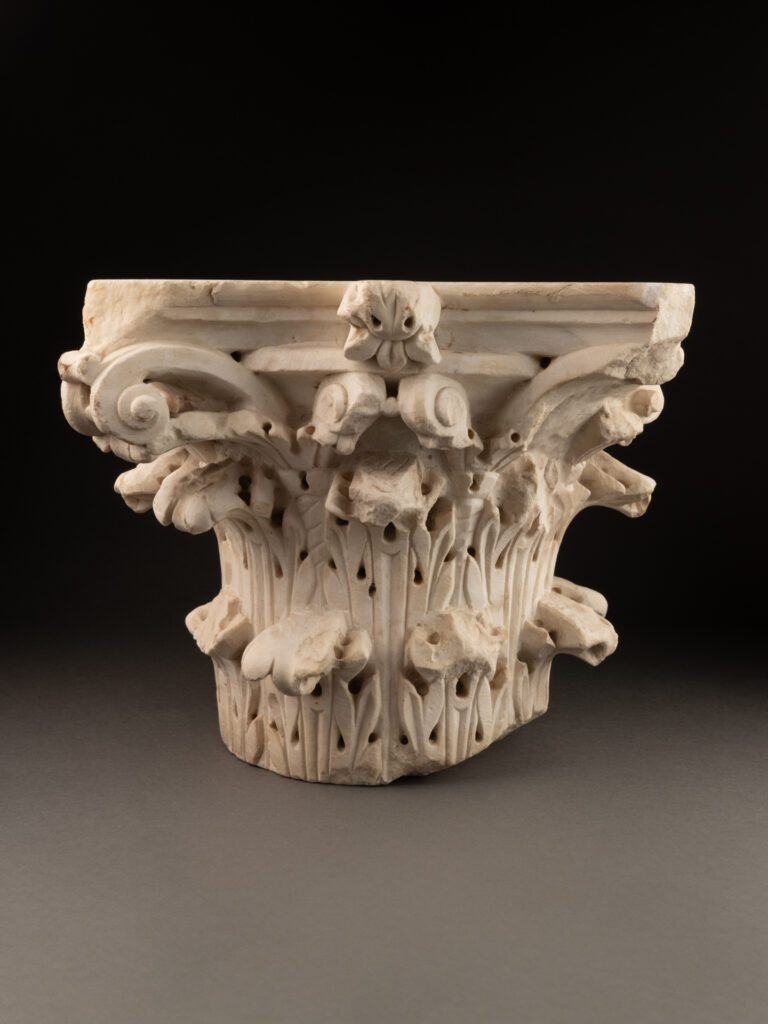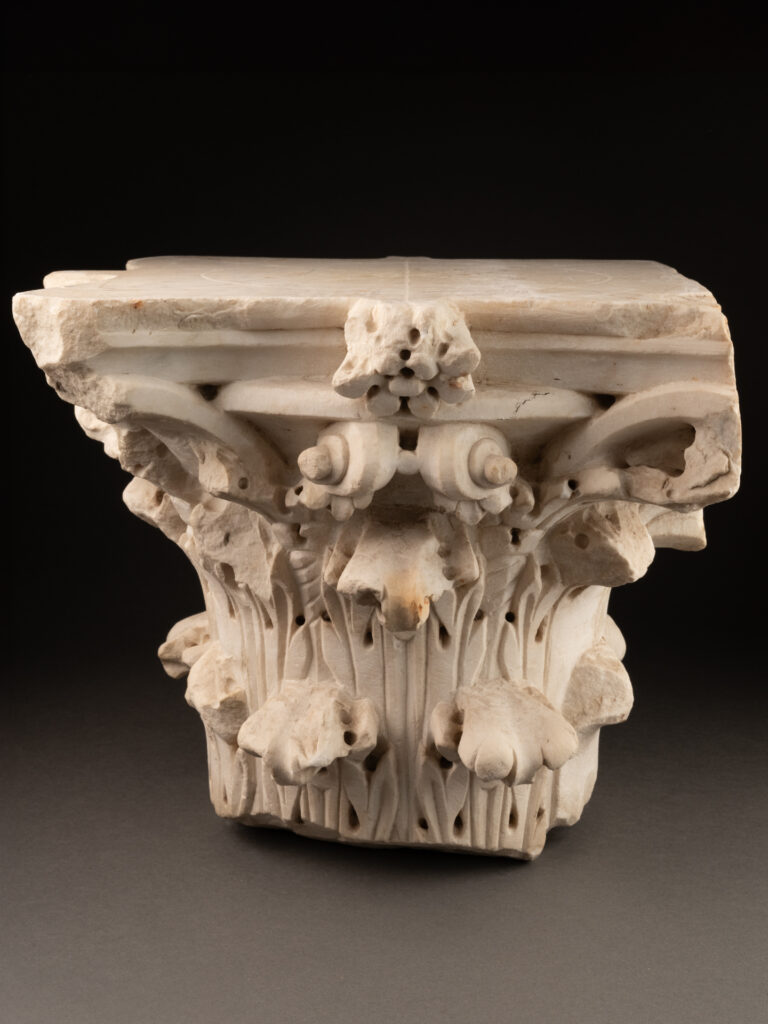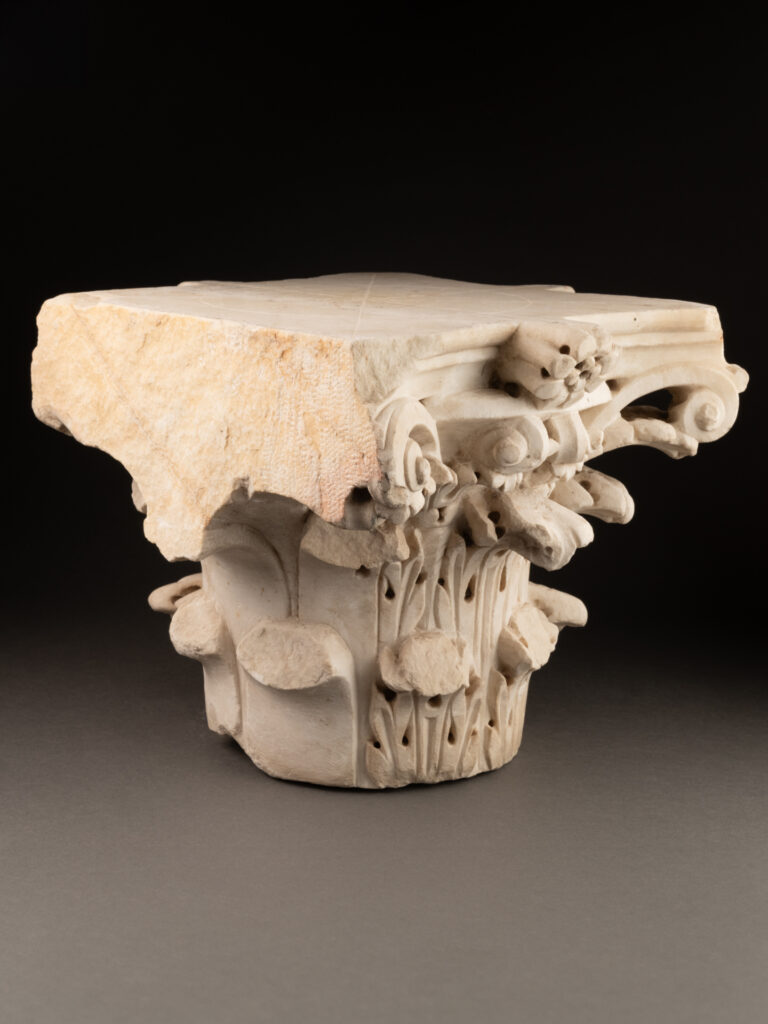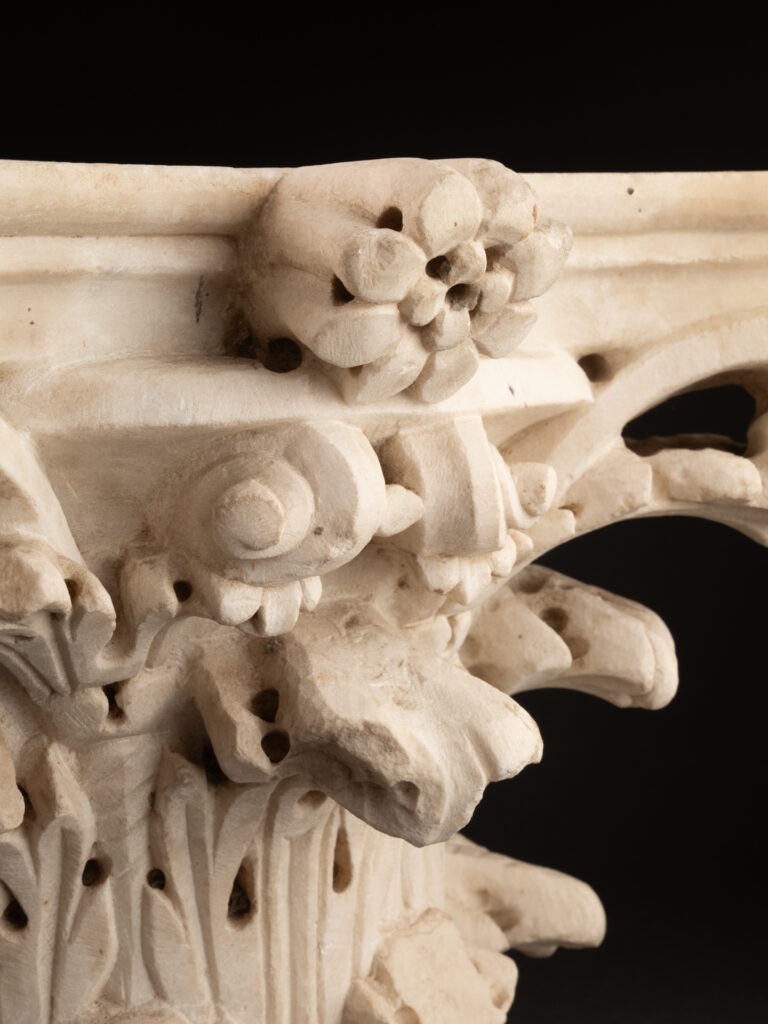This architectural element is a marble capital dating from the 16th century. It has all the characteristics of the Corinthian order, one of the three Greek architectural orders, whose ensemble is mainly determined by a wealth of ornamentation and a capital decorated with two rows of acanthus leaves.
Acanthus is a southern plant with broad, supple, deeply cut leaves that the Greeks used as ornaments for their funerary steles.
From the 5th century B.C. onwards, they chose it to compose their third type of capital, the Corinthian, which follows on from the Doric and Ionic types. The Corinthian order was used in the construction of the Temple of Zeus in Athens, the Olympiion.
The capital is also characterized by the flat face at the back, which must have been integral with the wall. Traces of the artist’s compass can also be seen on the top.
In its classical form, the Corinthian capital is composed of two registers of stemless acanthus leaves, with a broad base and slightly inclined at the top. Above the rows of acanthus leaves, two confronting scrolls extend from each corner of the capital. Two smaller, caulicolate scrolls face each other in the center. The base of the capital is curved, protruding at the corners and adorned with a flower on each side.
Our capital has these different elements while having the particularity of being sculpted on three sides and having its leaves worked with a drill bit.





